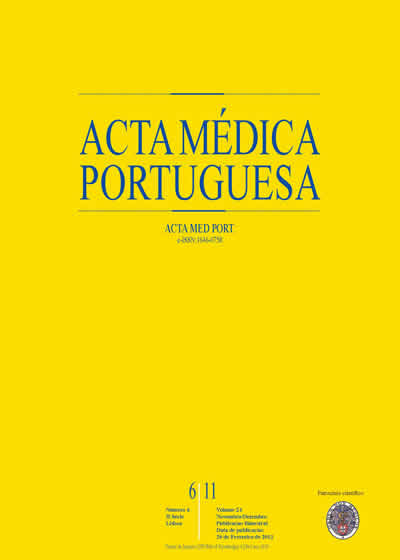Tratamento antibiótico da cistite não complicada em mulheres não grávidas até à menopausa.
DOI:
https://doi.org/10.20344/amp.1413Resumo
To review treatment recommendations for UC in non-pregnant women up to menopause, using the scale Strength of Recommendation Taxonomy (SORT).Medline, UpToDate, Cochrane, Bandolier, Database of Abstracts of Reviews of Effects, National Guideline Clearinghouse, Guidelines Finder and the website of the Portuguese Urology Association.Research of systematic reviews (SR), meta-analyses (MA), randomized controlled trials (RCT) and guidelines, published in english and portuguese, between 2000 and 2008.Two MA, two SR, four RCT and six Guidelines were included. Three-day treatments are preferable to those of seven to ten days, mainly because of higher compliance and lower cost and incidence of adverse effects (A). Longer regimens are acceptable for bacterial eradication. Trimethoprim/sulfamethoxazole (TMP/SMX) is the option where resistance levels are lower than 10-20% (A). As a clinical and microbiological alternative, evidence seems to point out the Fluoroquinolones (FQ) (C) which are equally efficient among themselves, although showing different safety profiles.In case of allergy or high resistance to TMP/SMX, FQ are the most efficacious alternative, both prescriptions recommended for three days. However, due to the risk of worsening resistance to FQ, the options consist on nitrofurantoin and fosfomicine.Downloads
Downloads
Publicado
Como Citar
Edição
Secção
Licença
Todos os artigos publicados na AMP são de acesso aberto e cumprem os requisitos das agências de financiamento ou instituições académicas. Relativamente à utilização por terceiros a AMP rege-se pelos termos da licença Creative Commons ‘Atribuição – Uso Não-Comercial – (CC-BY-NC)’.
É da responsabilidade do autor obter permissão para reproduzir figuras, tabelas, etc., de outras publicações. Após a aceitação de um artigo, os autores serão convidados a preencher uma “Declaração de Responsabilidade Autoral e Partilha de Direitos de Autor “(http://www.actamedicaportuguesa.com/info/AMP-NormasPublicacao.pdf) e a “Declaração de Potenciais Conflitos de Interesse” (http://www.icmje.org/conflicts-of-interest) do ICMJE. Será enviado um e-mail ao autor correspondente, confirmando a receção do manuscrito.
Após a publicação, os autores ficam autorizados a disponibilizar os seus artigos em repositórios das suas instituições de origem, desde que mencionem sempre onde foram publicados e de acordo com a licença Creative Commons









